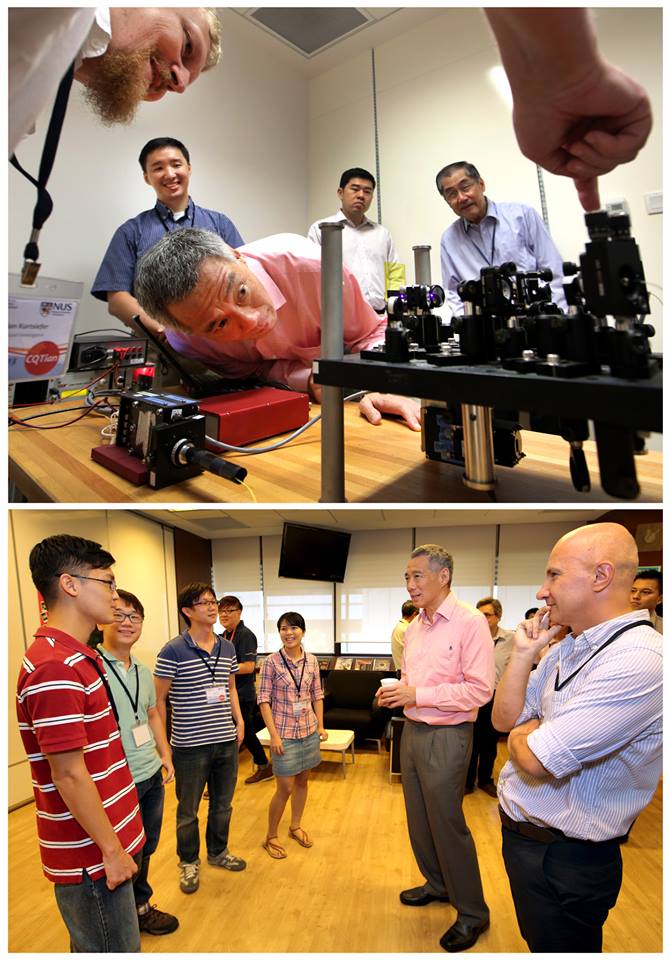Highlights
Singapore's Prime Minister visits CQT
After his visit to CQT on 17 December, PM Lee posted these photos to his Facebook page with the comment:
"Visited the Centre for Quantum Technologies (CQT) at NUS this morning. We set up CQT in 2007 as part of our national R&D effort. It applies quantum mechanics to secure communications (cryptography), ultra-precise measurements and new types of computing devices.
CQT has become one of the leading research centres in its field in the world. The researchers were a good mix of Singaporean and international talent. It was fun to listen to them explain their projects, and to see their enthusiasm and passion. (Here I am trying to see the laser source of entangled photon pairs.)
There are many potential uses for CQT's research, e.g. for online banking and secure internet transactions. I hope talented young people interested in physics and computing will learn more about these subjects, do research and make new breakthroughs one day! – LHL (MCI Photo by Terence Tan)"
The Centre for Quantum Technologies was yesterday honoured with a visit by the Prime Minister of Singapore, Lee Hsien Loong.
He was accompanied by a delegation from Singapore's National Research Foundation (NRF), Ministry of Education (MOE) and representatives of the National University of Singapore (NUS).
PM Lee Hsien Loong has been leader of Singapore since 2004, and he overseas national research and development programmes as Chair of the Research Innovation and Enterprise Council. He originally trained as a mathematician, graduating with a first class degree in Mathematics from the University of Cambridge, UK.
During his 1.5-hour visit to CQT, PM Lee was hosted by Artur Ekert, CQT Director, Lam Chuan Leong, Chair of CQT's Governing Board, and a group of CQT Principal Investigators, researchers and students.
Artur first described how researchers at CQT are studying and learning to control the properties of single atoms and photons, with implications for communication and computation. PI Valerio Scarani then introduced some key theoretical ideas behind today's most exciting proposals for quantum technology such as "device independent" schemes for key distribution and random number generation. These schemes can guarantee the security of devices from untrusted suppliers.
Next the delegation saw some of CQT's research, starting with a demonstration of devices used for quantum key distribution (QKD). The devices distribute pairs of entangled photons to create a secret key. CQT researchers are working on translating such technology into end-user devices that provide cryptographic solutions such as secure communication and random number generation.
The delegation also visited the labs of PIs Alexander Ling and Christian Kurtsiefer – seeing research towards miniaturised QKD systems and the possibility of device-independent implementations – and Dzmitry Matsukevich – where research is done not on single photons but on single ions (charged atoms). Trapped ions have potential applications in building quantum computers and in precision measurement.
There followed a brief reception for the party and other members of CQT in the Quantum Cafe before the visit ended.
Members of the delegation were Low Teck Seng, CEO, NRF, George Loh, Director (Physical Sciences & Engineering Directorate), NRF, Lee May Gee, Deputy Director, Higher Education, MOE, Tan Chorh Chuan, NUS President, Tan Eng Chye, NUS Provost, and Barry Halliwell, NUS Deputy President (Research and Technology).
For more photos from the visit, see our album here.







